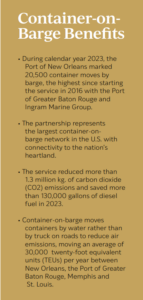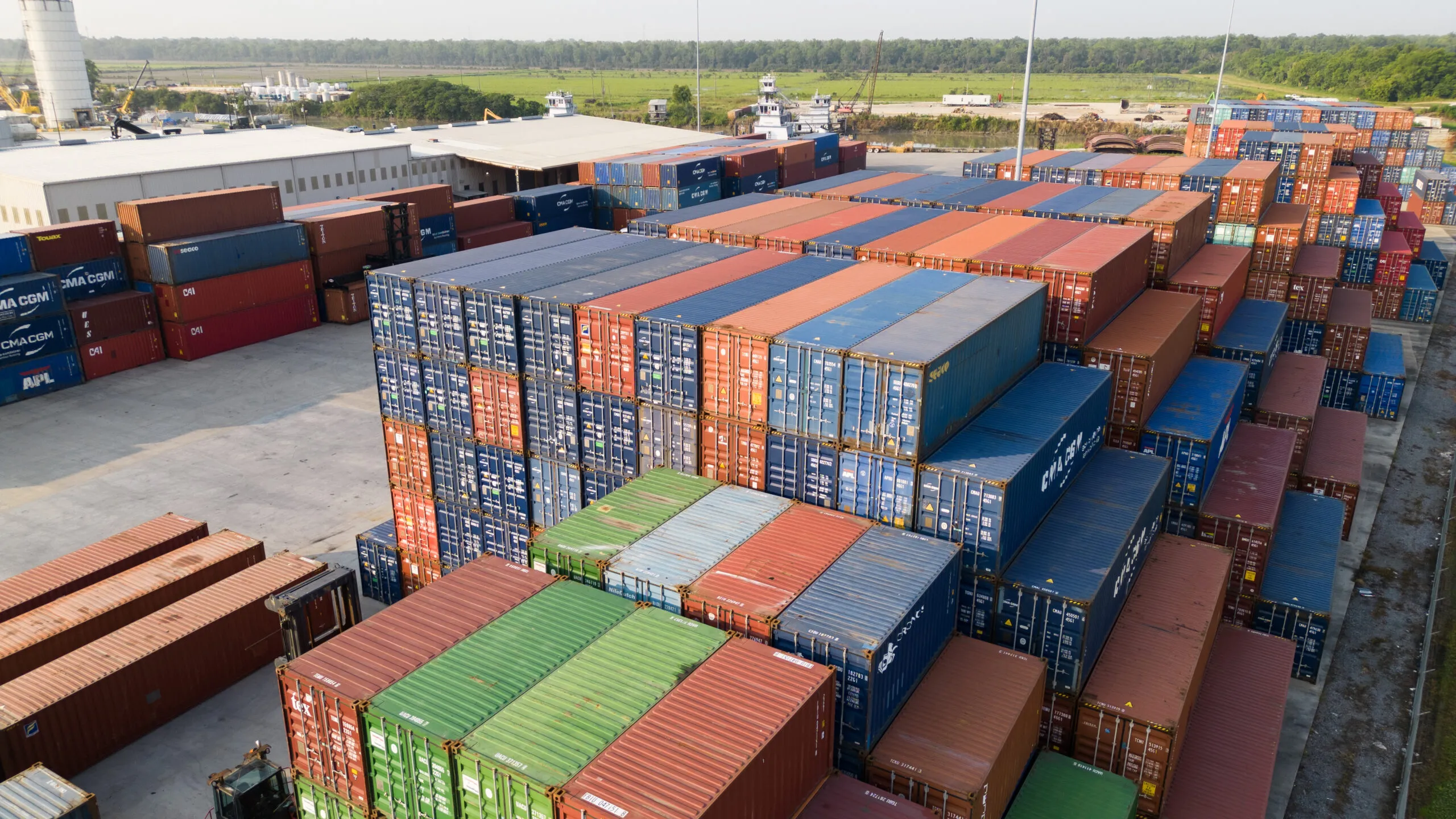Synergy is the theme of the year for the Port of Greater Baton Rouge. Through a partnership with the Port of New Orleans and a pioneering container-on-barge service initiated in 2016, the Port has not only demonstrated the tangible benefits of inter-port cooperation, but also charted a course for the future of the state’s maritime industry. This partnership, amid growing calls for enhanced collaboration among Louisiana’s ports, underscores the significant advantages of strategic alliances in driving economic growth, economic efficiencies, and competitiveness on a global stage.
AT A GLANCE
Top executives: Jay Hardman, P.E., Executive Director
Phone: 225.342.1660
Address: 2425 Ernest Wilson Dr., Port Allen, LA 70767
Website: portgbr.com
The container-on-barge service, which has rebounded from low water levels on the Mississippi River since 2022, has been a beacon of operational success. Facilitating the seamless movement of containerized cargo between the two ports, this initiative has leveraged the river’s strategic advantages, enhancing export capabilities and streamlining supply chains. The success of this endeavor is underscored by the expansion of the Port of Greater Baton Rouge’s container storage yard, now capable of accommodating nearly 1,800 containers—a testament to the growing demand of this service.
PREMIER GULF GATEWAY
Beyond the immediate operational successes, this partnership exemplifies the broader economic and strategic benefits of synergy between ports. The forthcoming Louisiana International Terminal (LIT) in St. Bernard Parish, spearheaded by the Port of New Orleans, is poised to further revolutionize container movement along the Mississippi River. This ambitious project, by significantly boosting the state’s container handling capacities, will impact the state’s and nation’s economy through job creation, enhanced trade capacities and increased global competitiveness.
“We’ve had a good working relationship with New Orleans in the past and believe our growth potential ties into the building of the LIT terminal,” says Port Executive Director Jay Hardman. “It will put the Mississippi River and the Port of New Orleans on the map as far as a container port and take them and the state of Louisiana’s economy well into the future.”
Scheduled to be operational by 2028, the LIT is expected to generate 32,000 new jobs nationwide—18,000 here in Louisiana and 4,300 in St. Bernard Parish— as well as more than $1 billion in total new state and local tax revenue by 2050.
TANGIBLE BENEFITS OF COOPERATION
This Baton Rouge-New Orleans collaboration serves as a powerful case study for the potential of unified efforts among Louisiana’s ports. In a landscape marked by calls for greater efficiency, enhanced federal grant acquisition and the reduction of redundant services, the success of this partnership has not only yielded tangible benefits, but also highlighted the strategic advantage of a coordinated approach.
“We are poised to expand this service even further in the coming years,” says Port NOLA
The evolving dynamics of global trade and the pressing need for sustainable, efficient maritime operations underscore the importance of visionary leadership and collaborative frameworks within Louisiana’s port ecosystem. The Port of Greater Baton Rouge and the Port of New Orleans, through their ongoing partnership, have not only set a precedent, but also laid the groundwork for a more integrated, cooperative future.
“If we work together as an association of ports, we can collaborate on grants and, ultimately, the establishment of America’s Marine Highway from Memphis to New Orleans,” adds Hardman. “We are all strongly united, and we look forward to more collaborative efforts, both big and small.”

